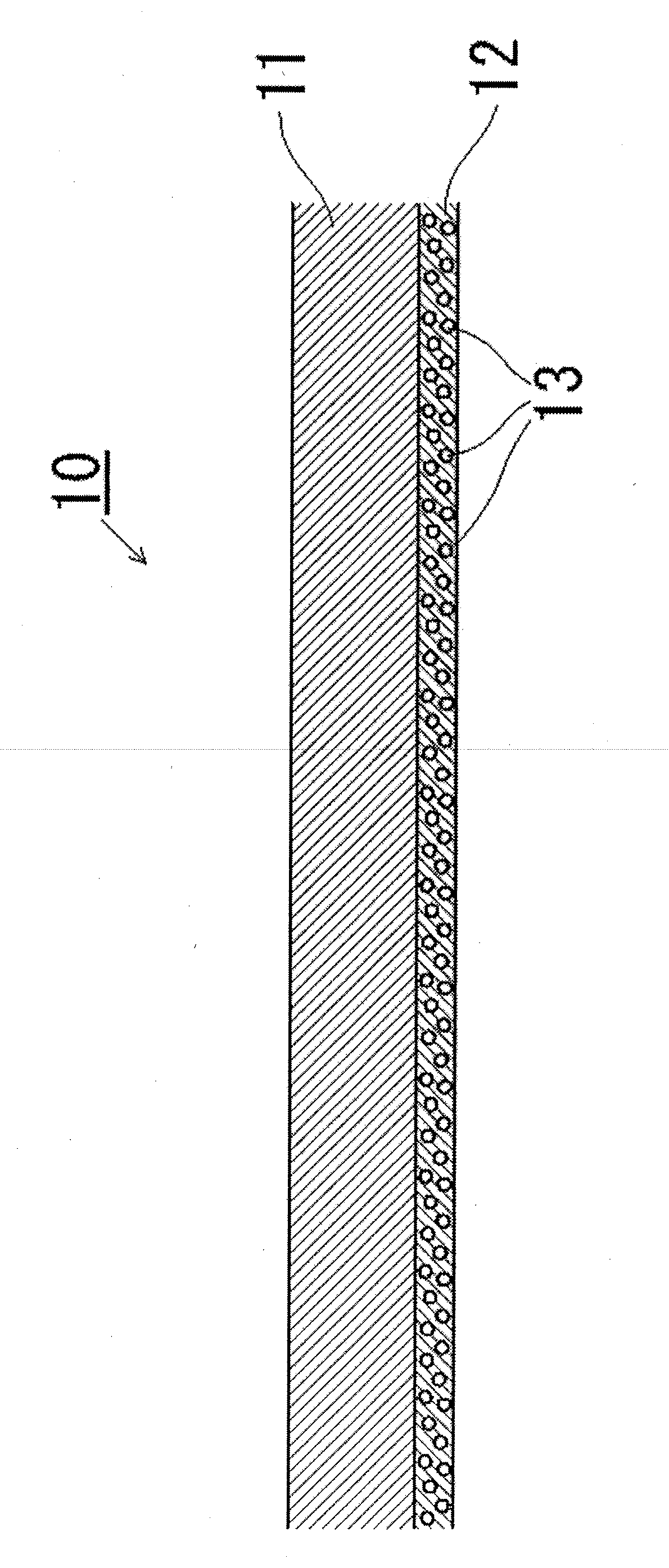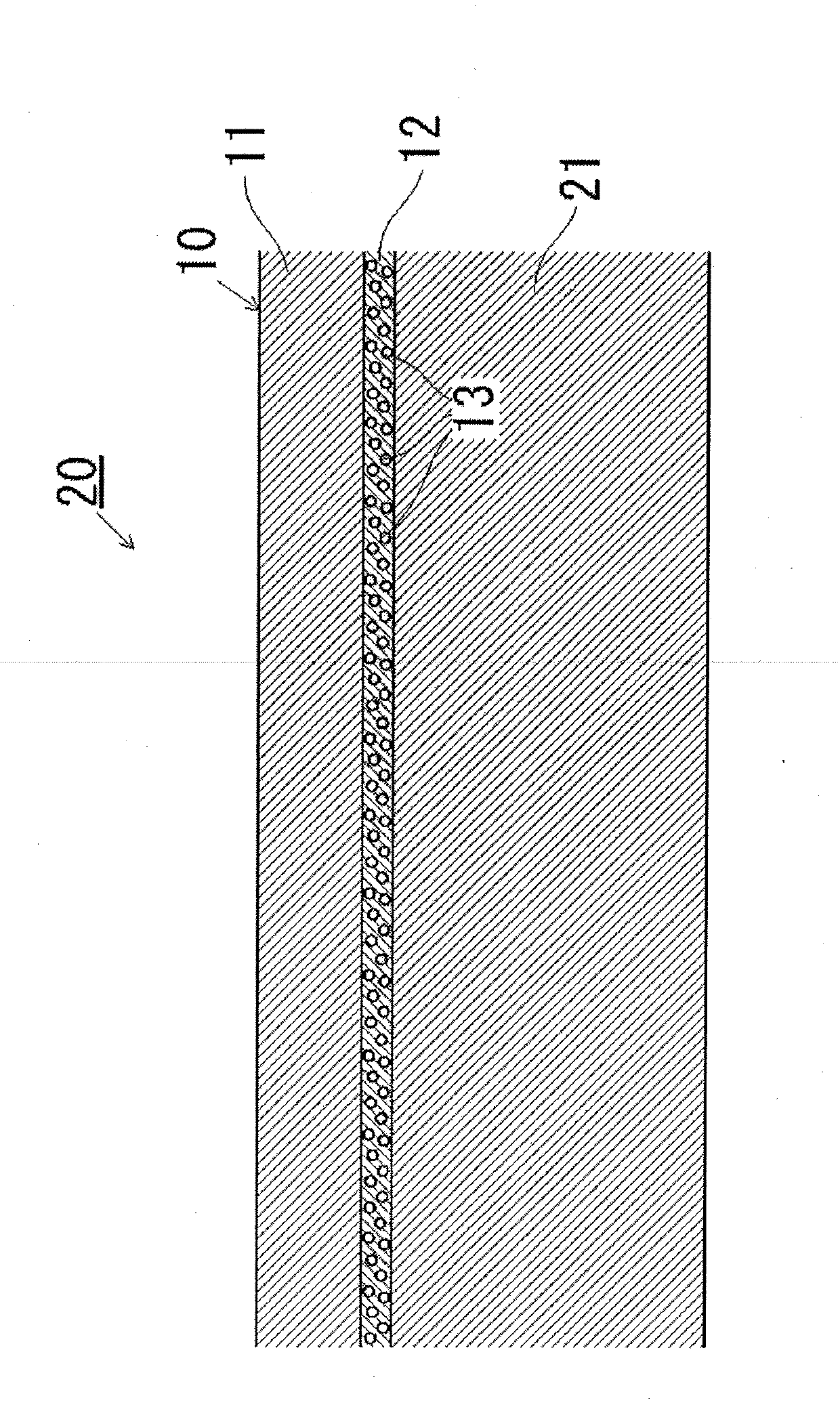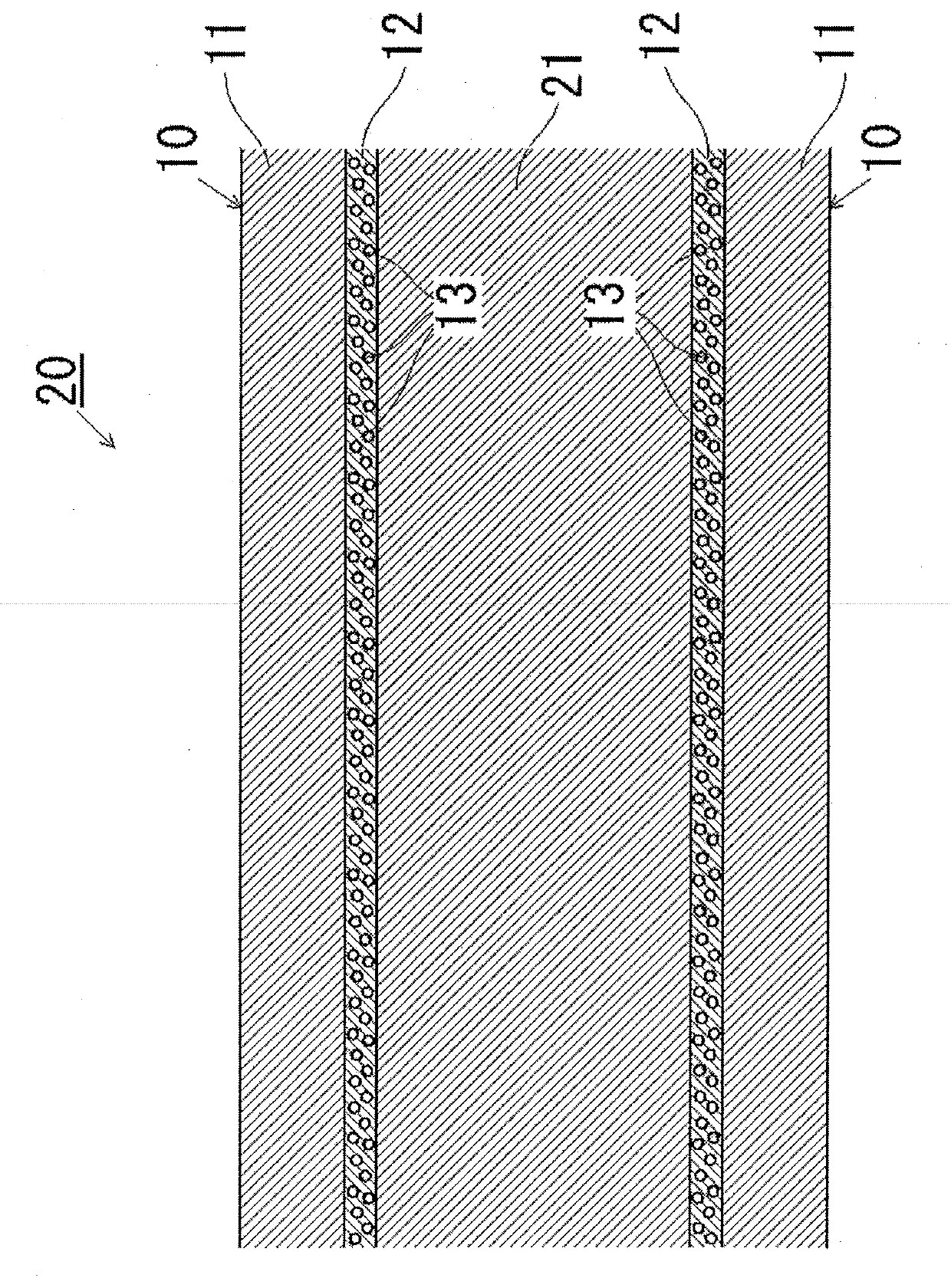Sound-absorbing outer covering material and sound-absorbing material
a technology of sound absorbing membrane and outer covering material, which is applied in the direction of instruments, synthetic resin layered products, transportation and packaging, etc., can solve the problems of poor durability, brittle surface, and inability to increase the thickness or weight of porous materials easily, so as to improve sound absorbing performance and appearance quality. good, easy-to-use effects
- Summary
- Abstract
- Description
- Claims
- Application Information
AI Technical Summary
Benefits of technology
Problems solved by technology
Method used
Image
Examples
examples
[0088]Hereinafter, the present invention will be described with reference to examples further embodying the present invention, but the present invention is not limited to the examples.
[Sample Production]
[0089](A) Nonwoven fabric: Three types of spun bonded nonwoven fabrics made of polyester fibers (softening point: 238° C.), having masses per unit area of (A-1) to (A-3) below, were used.
[0090](A-1) Mass per unit area: 15 g / m2 (thickness: 0.12 mm, airflow resistance: 0.03 kPa·s / m).
[0091](A-2) Mass per unit area: 50 g / m2 (thickness: 0.27 mm, airflow resistance: 0.04 kPa·s / m).
[0092](A-3) Mass per unit area: 100 g / m2 (thickness: 0.39 mm, airflow resistance: 0.08 kPa·s / m).
[0093](B) Impregnation liquid: Seven types of aqueous solutions having concentrations of (B-1) to (B-4) and (B-6) to (B-8) below, in solid contents, were used by using polyvinyl alcohol (product name: GL05, manufactured by Nippon Synthetic Chemical Industry Co., Ltd.) as a water-soluble polymer. For (B-5), polyvinyl alc...
PUM
| Property | Measurement | Unit |
|---|---|---|
| softening point | aaaaa | aaaaa |
| temperature | aaaaa | aaaaa |
| softening point | aaaaa | aaaaa |
Abstract
Description
Claims
Application Information
 Login to View More
Login to View More - R&D
- Intellectual Property
- Life Sciences
- Materials
- Tech Scout
- Unparalleled Data Quality
- Higher Quality Content
- 60% Fewer Hallucinations
Browse by: Latest US Patents, China's latest patents, Technical Efficacy Thesaurus, Application Domain, Technology Topic, Popular Technical Reports.
© 2025 PatSnap. All rights reserved.Legal|Privacy policy|Modern Slavery Act Transparency Statement|Sitemap|About US| Contact US: help@patsnap.com



